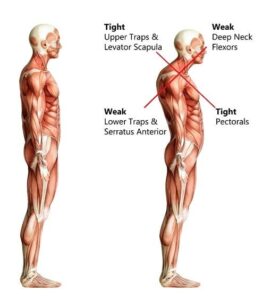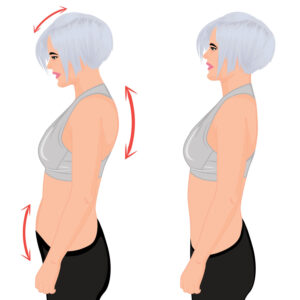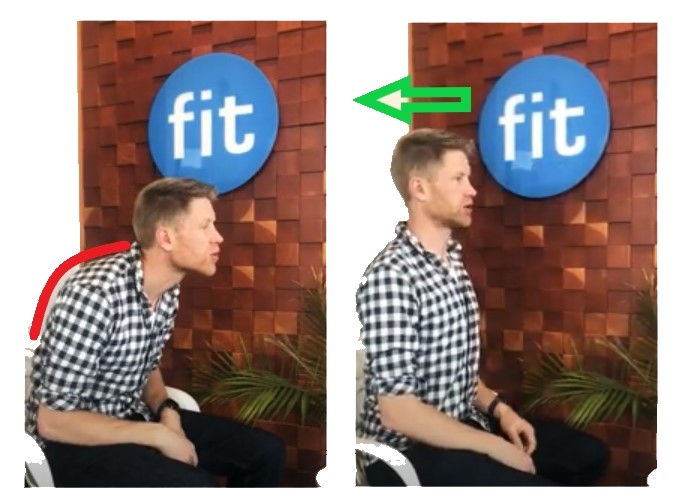I am sure everyone has seen someone with upper cross syndrome (UCS), whether they knew what it was called or not. A person with UCS will look like they are hunched over with rounded shoulders and head protruding forward. See the image below to get a better visual of what UCS looks like.
 Basically, if someone has UCS they will have tight (overactive) upper traps and levator scapula muscle as well as tight pecs (chest muscles). Along with these tight muscles, the neck flexors on the front side and the rhomboids and lower traps on the back are over-lengthened and inhibited. The tight or over-active muscles have become shortened and weak and the under-active muscles have been lengthened and turned off. This is what happens when there is a muscle imbalance in the body.
Basically, if someone has UCS they will have tight (overactive) upper traps and levator scapula muscle as well as tight pecs (chest muscles). Along with these tight muscles, the neck flexors on the front side and the rhomboids and lower traps on the back are over-lengthened and inhibited. The tight or over-active muscles have become shortened and weak and the under-active muscles have been lengthened and turned off. This is what happens when there is a muscle imbalance in the body.


UCS is one of the more common muscle imbalances that people possess and the majority of them don’t know they have it. Someone can get UCS from doing repetitive things such as their job. People who sit in a chair all day tend to hunch over and overtime will start to possess UCS. If your job requires you to stand all day while slightly bending over while working with your hands the same would apply. Also, people that exercise and work out the chest/upper traps a lot more than the lower traps/rhomboids will eventually get UCS. If you already possessed muscle imbalances before you started exercising then it would gradually get worse as you performed exercises, unless corrected.
People with UCS may complain of symptoms such as neck pain, jaw pain, upper thoracic pain and headaches due to the muscle imbalances and altered posture. Over time, poor posture can lead to all the above symptoms as well as more long term complications such as osteoarthritis or degenerative joint disease. Recent research links this posture to mood and triggers for depression.

So how do you fix Upper Cross Syndrome? You need stretch the tight (overactive) muscles and strengthen the weak (underactive) muscles. The chest muscles and the upper traps need to be stretched. Here are some examples of stretching exercises that can be done:
1. Pectoralis Major Stretch
Stand against an object and form a 90 degree angel with your arm. Draw your navel inward. Slowly lean forward until a light stretch is felt in the front shoulder and chest area. Hold the stretch for 30 seconds. Switch arms. Perform 1-2 sets twice a day.
2. Upper Trap + Levator Scapulae muscle stretch
Stand in place with good posture. Draw navel inward. Retract and depress scapula on the side being stretched. Tuck chin and slowly flex head to one side, pulling one ear toward the same shoulder. Hold the stretch for 30 seconds. Switch sides. Perform 1-2 sets each side twice a day.
3. Deep Neck Flexor Muscle Strengthening: Laying flat on your back, try to lift your head off the mat keeping your chin tucked back, and hold your head just 1cm above the mat. Hold for 15 sec reps (x4), trying not to jut your chin. If you notice shaking from the muscles, then there is some deep neck flexor muscle fatigue and will need to work on this 1-2x/day.
4. Strengthening Rhomboids + lower traps. Standing row: Tie a physio-band to a door-handle (and lock the door!) and facing it pull towards your body from an outstretched position pulling through with your elbows all the way so your hand are level with your chest. Repeat 30x 1-2 sets. Both sides daily.
Another version of this is “Tech Neck” or the Modern Work-from-home ergonomics with laptop, see video below.

